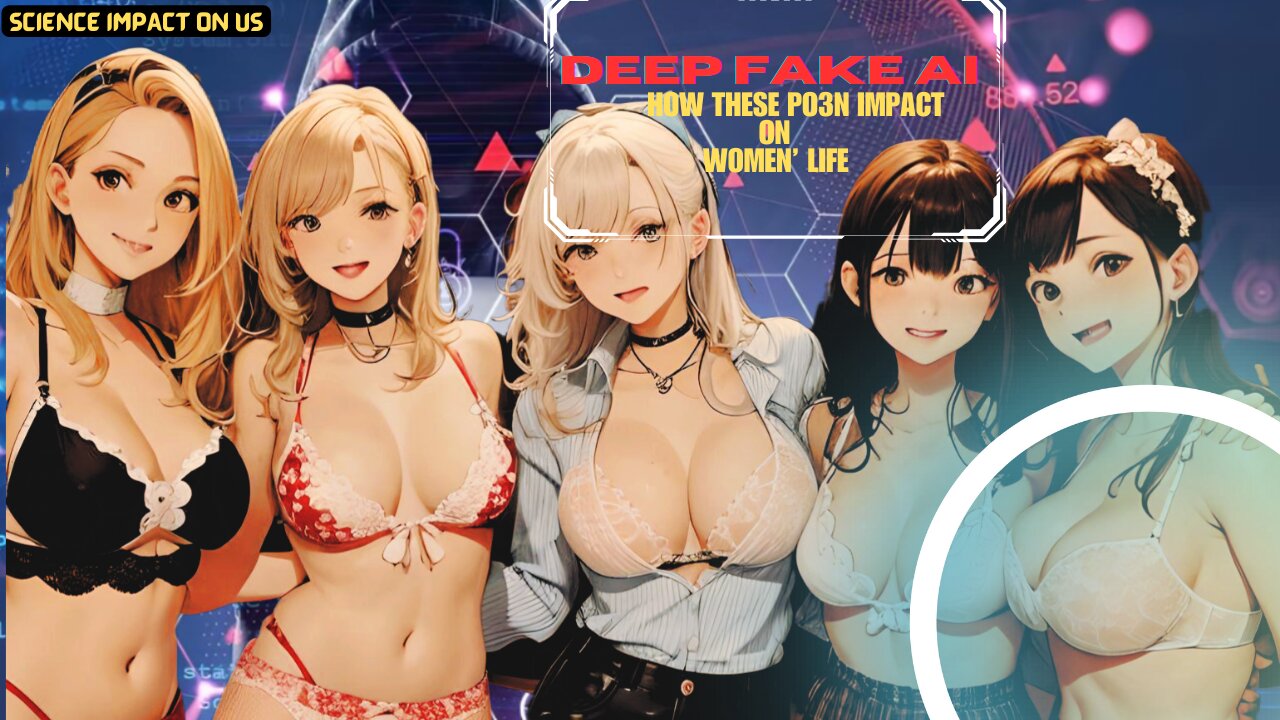Premium Only Content

Womens are getting Deepfaked Into Po3n by AI | Deepfake Po3n
Deepfake AI refers to the use of artificial intelligence (AI) techniques, particularly deep learning, to create highly realistic and often deceptive digital content, such as videos, images, or audio recordings. The term "deepfake" is a portmanteau of "deep learning" and "fake."
Here are key aspects of deepfake AI:
1. **Deep Learning Algorithms:**
- Deepfakes are primarily generated using deep neural networks, a subset of machine learning that involves layers of interconnected nodes to learn patterns and features from large datasets.
- Generative models, such as Variational Autoencoders (VAEs) and Generative Adversarial Networks (GANs), are commonly employed for creating realistic content.
2. **Face-swapping Technology:**
- One common application of deepfake technology is face-swapping, where the face of one person is seamlessly replaced with another in a video or image.
- Deep neural networks can learn facial features, expressions, and movements to make the swapped face look convincing.
3. **Audio Deepfakes:**
- Deepfake AI is not limited to visual content; it can also be applied to audio, creating realistic synthetic voices or manipulating existing recordings.
- Voice cloning algorithms use deep learning to reproduce the unique characteristics of a person's voice.
4. **Detection Challenges:**
- As deepfake technology advances, it becomes increasingly challenging to distinguish between authentic and manipulated content.
- Researchers are actively working on developing deepfake detection methods, but the cat-and-mouse game between creators and detectors continues.
5. **Ethical Concerns:**
- The rise of deepfake technology has raised ethical concerns due to its potential for misuse, such as spreading misinformation, impersonation, or creating malicious content.
- There are concerns about the impact of deepfakes on public trust, privacy, and the potential for their use in cyber attacks or political manipulation.
6. **Applications:**
- While deepfake technology has been associated with negative implications, it also has legitimate and positive applications, such as in the entertainment industry for special effects, dubbing, or creating digital avatars.
7. **Regulation and Mitigation:**
- Governments and tech companies are exploring ways to regulate and mitigate the risks associated with deepfake technology.
- Efforts include the development of legislation, public awareness campaigns, and the integration of advanced detection technologies into online platforms.
As technology evolves, the ethical and regulatory considerations surrounding deepfake AI will continue to be important topics of discussion and development. It's crucial to strike a balance between innovation and responsible use to harness the positive aspects of AI while minimizing potential harm.
-
 15:17
15:17
Degenerate Jay
21 hours ago $4.46 earnedThis Batman Keeps Coming Back!
16.6K13 -
 37:38
37:38
Kyle Rittenhouse Presents: Tactically Inappropriate
12 hours ago $1.04 earnedThe Dinesh D'souza Interview
9.75K1 -
 12:18
12:18
NinjaGamblers
1 day ago $0.81 earnedHow to Win at Roulette with The Three-Layered Castle Strategy
13.5K3 -
 1:00:47
1:00:47
Trumpet Daily
20 hours ago $4.13 earnedEurope’s Sudden Turn Against America - Trumpet Daily | Mar. 6 2025
11.4K10 -
 14:58
14:58
BEK TV
1 day agoDUNSEITH DECLASSIFIED: UNRAVELING THE EXPLOSIVE TRUTH BEHIND A MINOT MURDER AND A SCANDAL!
23.4K1 -
 3:28:45
3:28:45
Price of Reason
16 hours agoTrump DELAYS Tariffs With Mexico! Mickey 17 Review! Gavin Newson Hosts Charlie Kirk! GTA6 EXPENSIVE!
52.3K16 -
 2:43:35
2:43:35
TimcastIRL
12 hours agoDemocrats SHUT DOWN Congress Blocking Censure Of Al Green, OBSTRUCT House w/Joe Redden | Timcast IRL
186K96 -
 1:03:27
1:03:27
Glenn Greenwald
16 hours agoUK Pressures Apple to Break Encryption in Major Privacy Clash; How Dems Can Win Back the Working Class: With Former Bernie Sanders Campaign Manager Faiz Shakir | SYSTEM UPDATE #419
104K97 -
 47:39
47:39
Michael Franzese
14 hours agoJewelry King Trax NYC EXPOSES How the Powerful Steal from You
99.7K18 -
 2:36:02
2:36:02
Slightly Offensive
14 hours ago $26.10 earnedCandace REDPILLS the Masses in BOMBSHELL Theo Von Interview | Guest: Shane Cashman
77.6K44